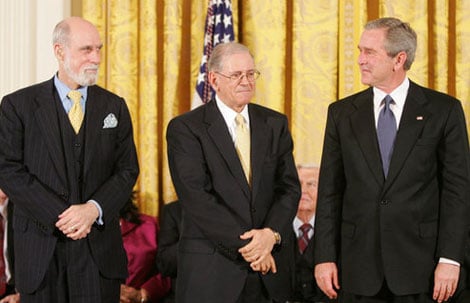
What is TCP/IP Protocol Suite: Complete Explanation
Transmission Control Protocol/Internet Protocol suite, shortly known as TCP/IP Protocol Suite , is a set of communication protocols utilized on the Internet and other computer networks. The Transmission Control Protocol (TCP) and the Internet Protocol (IP) are the suite’s current basic protocols.
Because the United States Department of Defense backed the development of the networking approach through DARPA, it was dubbed the Department of Defense (DoD) model throughout its development. A protocol stack is used to implement it.
The Internet protocol suite specifies how data should be packetized, addressed, transferred, routed, and received from beginning to end. This functionality is divided into four abstraction layers, each of which all connected protocols according to their networking scope.
The link layer, which contains communication methods for data that remains within a single network segment (link); the internet layer, which provides internetworking between independent networks; the transport layer, which handles host-to-host communication; and the application layer, which offers process-to-process data exchange for applications, are the layers in order from lowest to highest.
TCP/IP Protocol Suite: An exact definition
TCP/IP stands for Transmission Control Protocol/Internet Protocol, and it is a set of Internet communication protocols that allows digital computers to connect across great distances. The Internet is a packet-switched network, which means that data is split down into little packets and sent individually via multiple routes at the same time, before being reassembled at the receiving end. TCP collects and reassembles data packets, while IP ensures that the packages are delivered to the correct location.
How Does TCP/IP Protocol Suite Work
TCP/IP is based on the client-server model of communication, in which another computer (a server) on the network provides a service to a user or machine (a client), such as transmitting a webpage.
The TCP/IP suite of protocols is characterized as means that each client request is treated as unique and unrelated to prior ones. Being stateless allows network paths to be reused indefinitely. The transport layer, on the other hand, is state-full. It sends a single message and maintains its connection until all of the packets in the news are received and reassembled at the destination.
The TCP/IP model is slightly different from the seven-layer Open Systems Interconnection (OSI) networking model that followed it. The OSI reference model specifies how apps communicate over the internet.
Who Created TCP/IP Protocol Suite
TCP/IP protocol suite, the most widely used network protocol globally, was created in the 1970s by two DARPA scientists, Vint Cerf and Bob Kahn. In computer history, they are known as the “Fathers of the Internet.”
They began research on reliable data transfers across packet radio networks in the spring of 1973, factored in lessons learned from the Networking Control Protocol, and then designed the next generation Transmission Control Protocol (TCP), which is now the standard protocol used on the Internet.

What is the Application of TCP/IP?
TCP/IP can be used to allow remote login via the network for interactive file transfer, email delivery, web page delivery, and remote access to a server host’s file system. It is most commonly used to describe how data changes shape as it travels from the concrete physical layer to the abstract application layer through a network. It explains the underlying protocols, or communication methods, at each layer as data travels through.
TCP/IP aids in the connecting of many types of computers, works independently of the operating system, supports numerous routing protocols, and has a highly scalable client-server architecture. TCP/IP is self-contained and capable of supporting several routing protocols while lightweight, putting a minimal burden on the machine.
What is the difference between “Automaton vs. Robot”
The primary distinction between an Automaton and a Robot is that an automaton is a self-operating machine, whereas a Robot is a virtual artificial entity that performs physical tasks.
A self-operating machine, or a machine or control system designed to follow a predetermined sequence of operations or respond to predetermined instructions, is known as an automaton. In contrast, a robot is a machine capable of automatically carrying out a complex set of activities, especially one that a computer can pro. Robots can be steered by an external control device or by the control built within the robot itself.
Examples of TCP/IP Protocol Suite in the Real World
The examples of TCP/IP in real-world include the following:
- Text Communication – In today’s world, we are all aware of the importance of text communication. Any texting disparity between sender and receiver will not be accepted. As a result, TCP is employed in Text Communication because of its reliable transmission, error control, and data receiving in order. WhatsApp, Instagram, Google Chat, and iMessage are just a few examples.
- File transfer or FTP – TCP is employed in we cannot tolerate data loss, and getting data in the wrong sequence is critical. FTP uses two TCP connections, one for control and one for data. FTP sends information such as user identity and passwords across the control connection. Examples include FileZilla Client and Server.
- Hypertext Transfer Protocol (HTTP) – This protocol is used to access data on the Internet. It employs the TCP protocol to access web pages on the internet since TCP allows for in-order data, error control and flow control, and data segment retransmission.
- ail Transfer Protocol (SMTP) (SMTP) – It’s an application layer protocol for sending emails from one system to another. TCP is used by SMTP to establish a connection with the SMTP server. The sender can send emails once the SMTP server accepts the connection request. Yahoo, Gmail, Outlook, and other similar services are examples.

